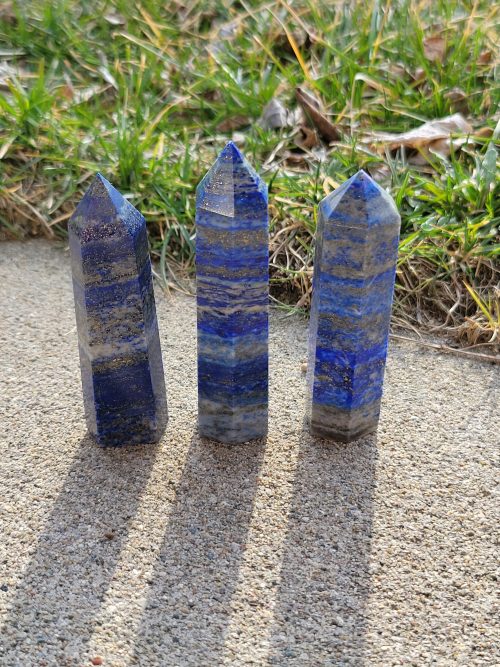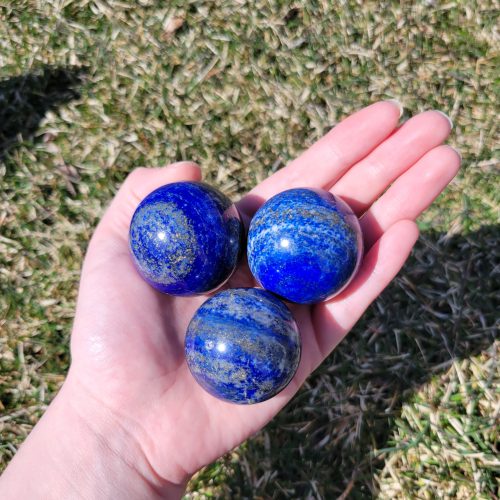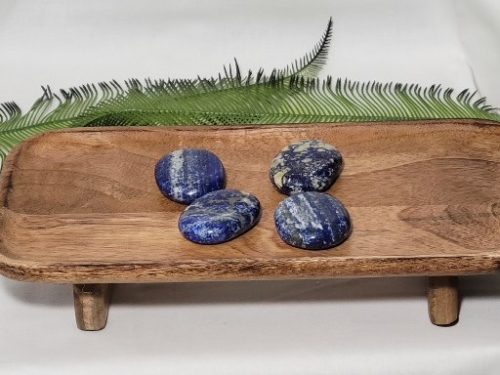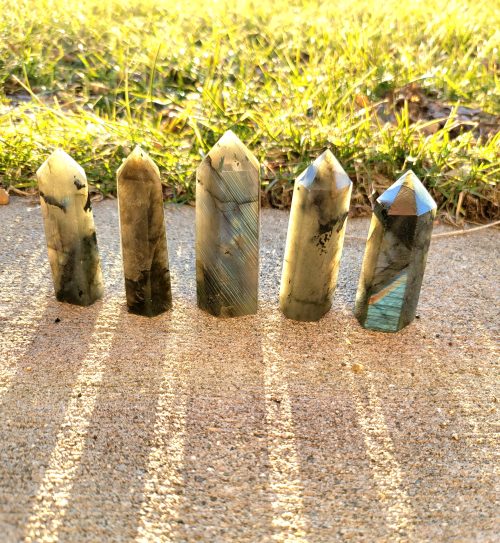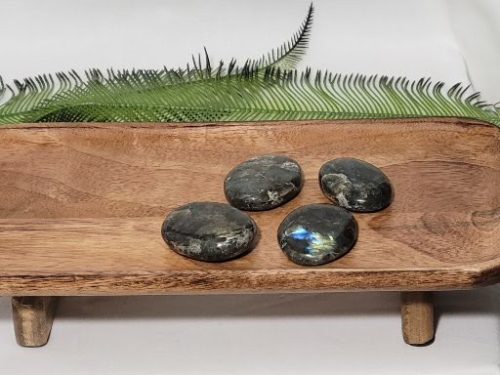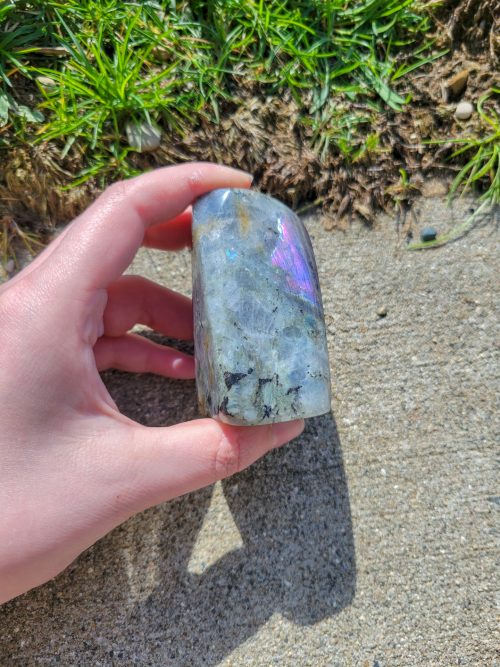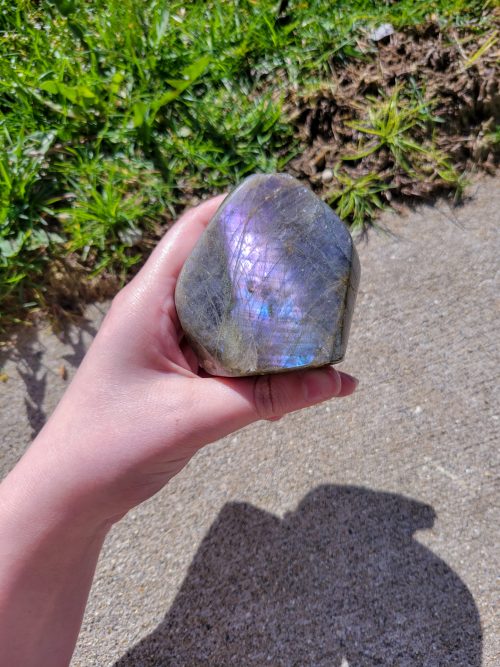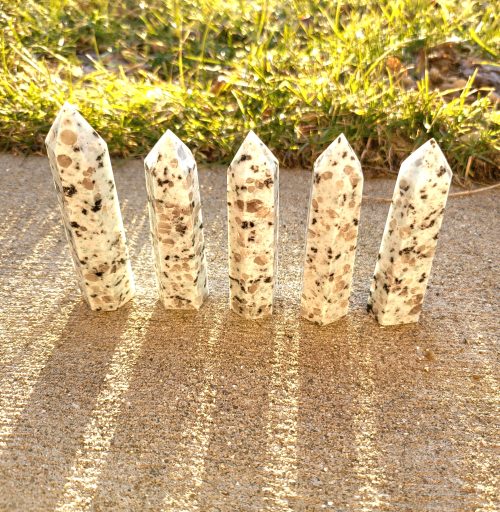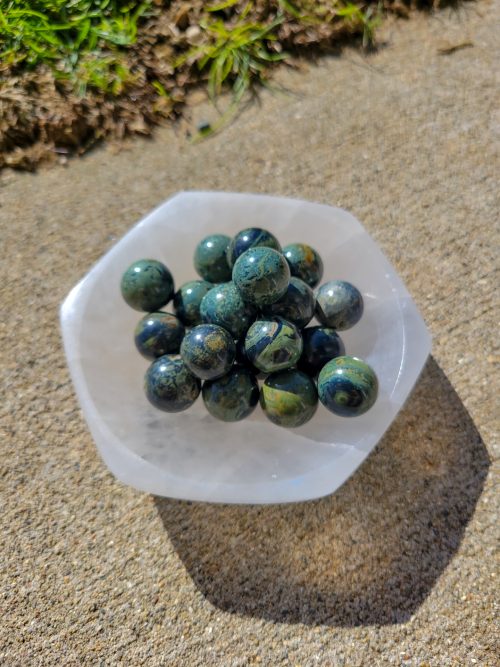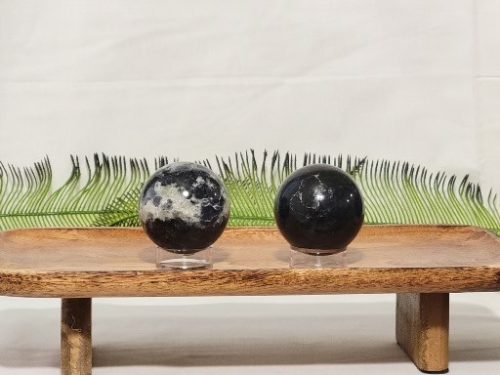-
8.5cm - 9.5cm Tall Lapis lazuli forms near igneous interferances where limestone or marble has been altered by contact metamorphism or hydrothermal metamorphism. In these rocks, lazurite replaces portions of the host rock and often develops within certain bands or layers which can include other minerals such as pyrite and white calcite. Lapis Lazuli is mostly found in Afghanistan but can also be found in Chile, Russia, Canada, Argentina, Pakistan, and the US. Within the US, these stones can be found in Colorado, California, and Arizona. ***Due to natural variations in stones, appearance will vary***
-
45mm Lapis lazuli forms near igneous interferances where limestone or marble has been altered by contact metamorphism or hydrothermal metamorphism. In these rocks, lazurite replaces portions of the host rock and often develops within certain bands or layers which can include other minerals such as pyrite and white calcite. Lapis Lazuli is mostly found in Afghanistan but can also be found in Chile, Russia, Canada, Argentina, Pakistan, and the US. Within the US, these stones can be found in Colorado, California, and Arizona. ***Due to natural variations in stones, appearance will vary***
-
5cm - 6cm Lapis Lazuli is a semiprecious stone that is commonly used in jewelry and decor all over the world. It is a metamorphic mineral who's composition is variable. Very frequently, Lapis has Pyrite inclusions in it. This semiprecious stone gets its color from the deep blue Lazurite in it (also found in sodalite). Lapis is found in the mines Badakshan, northeastern Afghanistan, and those near Ovalle, Chile. ***Due to natural variations in stones, the appearance will vary***
-
6cm - 8cm Tall Labradorite is a type of feldspar that gets it's flashy colors from intergrowths within the mineral. Light then travels through these intergrowths and displays its beautiful colors. These colors can range from purples and blues to greens and yellows. This mineral gets its name from where it was originally discovered, in Labrador, Canada. This mineral was also found in Finland during WWII and was also known as "Falcon's Eye". ***Due to natural variations in stones, the appearance will vary***
-
4cm - 5cm Labradorite is a type of feldspar that gets it's flashy colors from intergrowths within the mineral. Light then travels through these intergrowths and displays its beautiful colors. These colors can range from purples and blues to greens and yellows. This mineral gets its name from where it was originally discovered, in Labrador, Canada. This mineral was also found in Finland during WWII and was also known as "Falcon's Eye". ***Due to natural variations in stones, the appearance will vary***
-
5cm x 4.5cm x 7.5cm Labradorite is a type of feldspar that gets it's flashy colors from intergrowths within the mineral. Light then travels through these intergrowths and displays its beautiful colors. These colors can range from purples and blues to greens and yellows. This mineral gets its name from where it was originally discovered, in Labrador, Canada. This mineral was also found in Finland during WWII and was also known as "Falcon's Eye". ***Due to natural variations in stones, the appearance will vary***
-
7.5cm x 5cm x 7.5cm Labradorite is a type of feldspar that gets it's flashy colors from intergrowths within the mineral. Light then travels through these intergrowths and displays its beautiful colors. These colors can range from purples and blues to greens and yellows. This mineral gets its name from where it was originally discovered, in Labrador, Canada. This mineral was also found in Finland during WWII and was also known as "Falcon's Eye". ***Due to natural variations in stones, the appearance will vary***
-
8.5cm - 9.5cm Tall Kiwi Jasper is a mix of amazonite, tourmaline, jasper, and quartz. It gets its name from the green tinge (amazonite) it has in addition to the green specks on it (tourmaline). This mineral is mainly found in New Zealand. ***Due to natural variations in stones, appearance will vary***
-
5cm - 6cm Wide Kiwi Jasper is a mix of amazonite, tourmaline, jasper, and quartz. It gets its name from the green tinge (amazonite) it has in addition to the green specks on it (tourmaline). This mineral is mainly found in New Zealand. ***Due to natural variations in stones, appearance will vary***
-
7cm Wide Kiwi Jasper is a mix of amazonite, tourmaline, jasper, and quartz. It gets its name from the green tinge (amazonite) it has in addition to the green specks on it (tourmaline). This mineral is mainly found in New Zealand. ***Due to natural variations in stones, appearance will vary***
-
15mm Also known as Crocodile Jasper, Kambaba Jasper is a sedimentary Fossilized Stromatolite Algae. Greenish or blackish orbs of petrified algae with mostly black centers make this stone very different from other jaspers. The name “crocodile jasper” refers to the stone’s resemblance to Crocodile eyes. It is a very old stone dating back about 3 billion years and is found in South Africa and Madagascar. ***Due to natural variations in stones, appearance will vary***
-
40mm - 50mm Iolite is a magnesium iron aluminum cyclosilicate mineral formed in metamorphic rocks underground. High pressure and temperature mixed with high amounts of magnesium is how this mineral gets its dark violet color. This mineral, when cut and polished, is gemstone material and is transparent. Many countries use this in jewelry as opposed to Sapphire and Tanzanite. ***Due to natural variations in stones, the appearance will vary***

